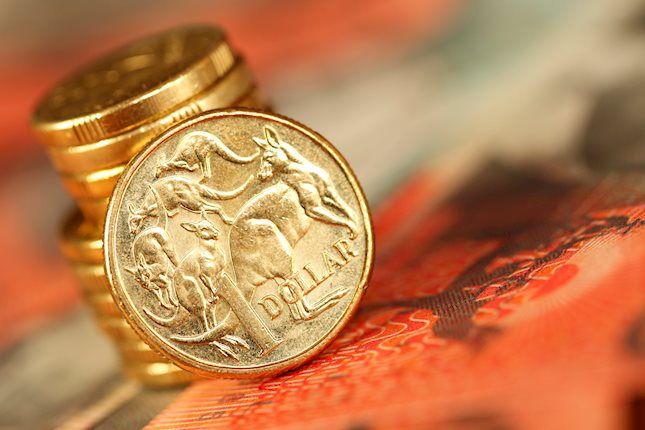US PPI inflation figures ticked higher in November, causing investors to tighten their stance slightly and keep the safe haven Greenback bid into the high side, though overall market mood remains on-balance.
Here’s what you need to know heading into Friday, December 13:
The US Dollar Index (DXY) extended into further gains on Thursday, climbing back into the 107.00 handle on broad-market investor caution after US Producer Price Index (PPI) inflation figures came in higher than expected, sparking near-term concerns that inflation could resurge in the US economy. US data is limited on Friday, and investors will likely continue to wind down their exposure ahead of the holiday season.
EUR/USD extended into a fifth consecutive down day, losing grip of the 1.0500 level and shedding yet another quarter of a percent after the European Central Bank (ECB) slashed interest rates in-line with market expectations. German Trade Balance figures for October are due on Friday, along with pan-EU Industrial Production figures for October. Both numbers are mid-tier at best, and are unlikely to move the needle in either direction.
GBP/USD tumbled back below 1.2700 on Thursday despite a thin economic data docket on the UK side. Cable traders may be giving up in the near term as GBP/USD continues to struggle with chart paper on the low side of the 200-day Exponential Moving Average (EMA) near 1.2825. No meaningful data on the GBP side is expected on Friday.
USD/JPY has coiled around its own 200-day EMA near 151.00, and a near-term bullish rebound from the key technical level has the Dollar-Yen pairing holding steady on Thursday near 152.60 despite the US’ uptick in producer-level inflation. Japan’s Tankan Large Manufacturing figures are due early Friday and are expected to decline slightly.
Economic Indicator
Producer Price Index ex Food & Energy (YoY)
The Producer Price Index ex Food & energy released by the Bureau of Labor statistics, Department of Labor measures the average changes in prices in primary markets of the US by producers of commodities in all states of processing. Those volatile products such as food and energy are excluded in order to capture an accurate calculation. Generally speaking, a high reading is seen as positive (or bullish) for the USD, whereas a low reading is seen as negative (or bearish).
Read more.Last release: Thu Dec 12, 2024 13:30
Frequency: Monthly
Actual: 3.4%
Consensus: 3.2%
Previous: 3.1%
Source: US Bureau of Labor Statistics
Fed FAQs
Monetary policy in the US is shaped by the Federal Reserve (Fed). The Fed has two mandates: to achieve price stability and foster full employment. Its primary tool to achieve these goals is by adjusting interest rates. When prices are rising too quickly and inflation is above the Fed’s 2% target, it raises interest rates, increasing borrowing costs throughout the economy. This results in a stronger US Dollar (USD) as it makes the US a more attractive place for international investors to park their money. When inflation falls below 2% or the Unemployment Rate is too high, the Fed may lower interest rates to encourage borrowing, which weighs on the Greenback.
The Federal Reserve (Fed) holds eight policy meetings a year, where the Federal Open Market Committee (FOMC) assesses economic conditions and makes monetary policy decisions. The FOMC is attended by twelve Fed officials – the seven members of the Board of Governors, the president of the Federal Reserve Bank of New York, and four of the remaining eleven regional Reserve Bank presidents, who serve one-year terms on a rotating basis.
In extreme situations, the Federal Reserve may resort to a policy named Quantitative Easing (QE). QE is the process by which the Fed substantially increases the flow of credit in a stuck financial system. It is a non-standard policy measure used during crises or when inflation is extremely low. It was the Fed’s weapon of choice during the Great Financial Crisis in 2008. It involves the Fed printing more Dollars and using them to buy high grade bonds from financial institutions. QE usually weakens the US Dollar.
Quantitative tightening (QT) is the reverse process of QE, whereby the Federal Reserve stops buying bonds from financial institutions and does not reinvest the principal from the bonds it holds maturing, to purchase new bonds. It is usually positive for the value of the US Dollar.
Information on these pages contains forward-looking statements that involve risks and uncertainties. Markets and instruments profiled on this page are for informational purposes only and should not in any way come across as a recommendation to buy or sell in these assets. You should do your own thorough research before making any investment decisions. FXStreet does not in any way guarantee that this information is free from mistakes, errors, or material misstatements. It also does not guarantee that this information is of a timely nature. Investing in Open Markets involves a great deal of risk, including the loss of all or a portion of your investment, as well as emotional distress. All risks, losses and costs associated with investing, including total loss of principal, are your responsibility. The views and opinions expressed in this article are those of the authors and do not necessarily reflect the official policy or position of FXStreet nor its advertisers. The author will not be held responsible for information that is found at the end of links posted on this page.
If not otherwise explicitly mentioned in the body of the article, at the time of writing, the author has no position in any stock mentioned in this article and no business relationship with any company mentioned. The author has not received compensation for writing this article, other than from FXStreet.
FXStreet and the author do not provide personalized recommendations. The author makes no representations as to the accuracy, completeness, or suitability of this information. FXStreet and the author will not be liable for any errors, omissions or any losses, injuries or damages arising from this information and its display or use. Errors and omissions excepted.
The author and FXStreet are not registered investment advisors and nothing in this article is intended to be investment advice.
Recommended content
Editors’ Picks

AUD/USD languishes near YTD trough amid stronger USD, RBA's dovish tilt
AUD/USD seems vulnerable amid a bullish USD, which continues to draw support from expectations that the Fed will pause its rate-cutting cycle. Moreover, US-China trade war fears, along with the RBA's dovish shift, overshadow Thursday's upbeat Aussie jobs data and hopes for additional stimulus from China, validating the negative outlook for the pair.

USD/JPY stands firm near two-week top on fading hopes for BoJ rate hike
USD/JPY holds steady near a two-week high amid the growing acceptance that the BoJ will not raise interest rates at its meeting next week. Furthermore, the recent USD move up to a fresh monthly top, bolstered by expectations for a less dovish Fed, offers support to the currency pair.

Gold price steadies after Wednesday's pullback from over one-month high
Gold price consolidates the previous day's profit-taking slide from a five-week high as traders refrain from placing directional bets ahead of the crucial FOMC meeting next week. In the meantime, expectations for a less dovish Fed remain supportive of elevated US bond yields and a stronger USD, which might continue to cap the XAU/USD.

Pro-crypto French Hill selected as Chairman of the House Financial Services Committee
Republican party members selected pro-crypto French Hill as the Chairman of the US House Financial Services Committee on Thursday to replace retiring Patrick McHenry.

Can markets keep conquering record highs?
Equity markets are charging to new record highs, with the S&P 500 up 28% year-to-date and the NASDAQ Composite crossing the key 20,000 mark, up 34% this year. The rally is underpinned by a potent mix of drivers.

Best Forex Brokers with Low Spreads
VERIFIED Low spreads are crucial for reducing trading costs. Explore top Forex brokers offering competitive spreads and high leverage. Compare options for EUR/USD, GBP/USD, USD/JPY, and Gold.